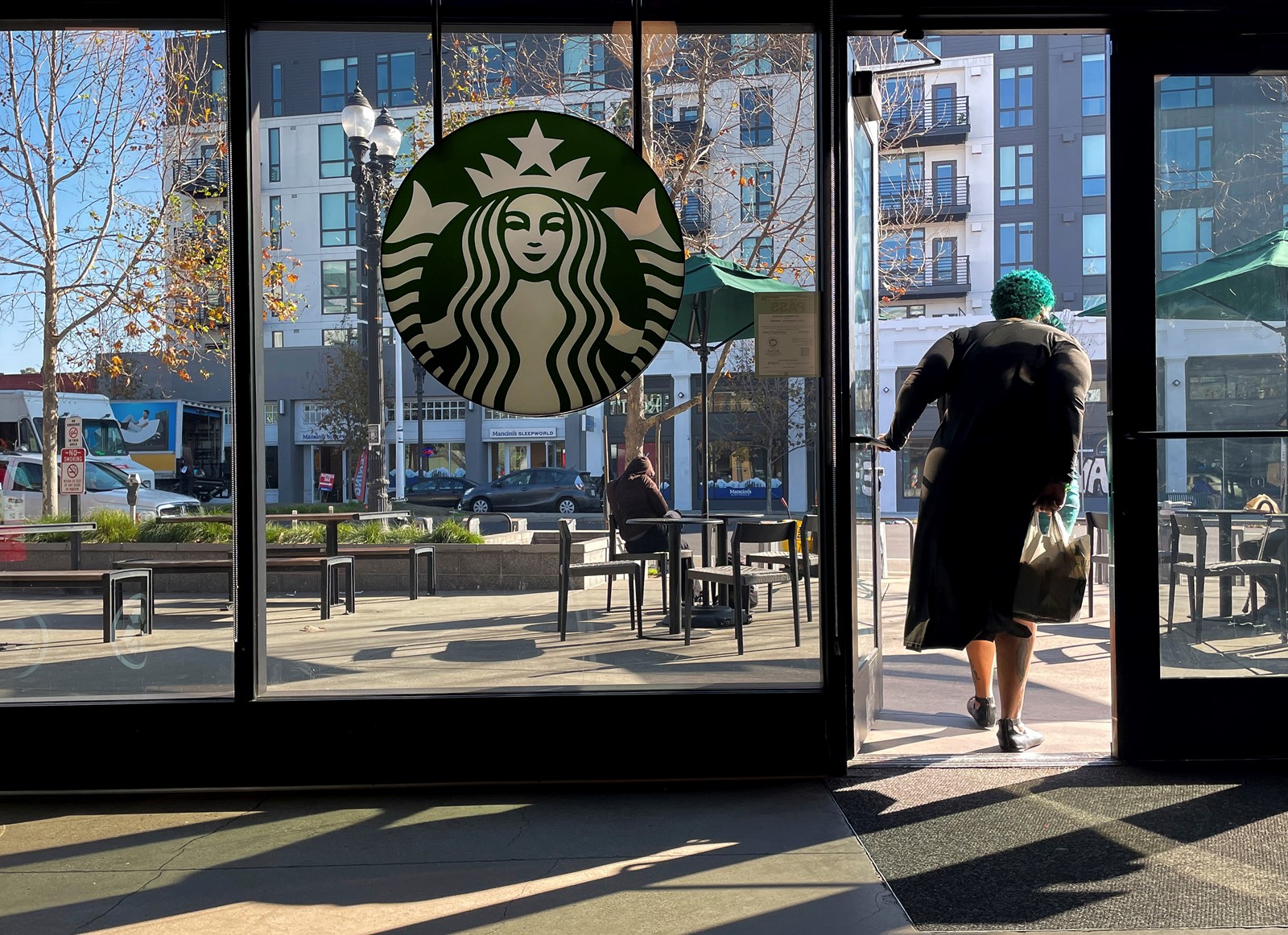
When customers walked into Starbucks on Monday, the vibes were different.
Workers will ask guests if they want drinks for here or to go, offering ceramic mugs to those who want to stay. Baristas will be more vigilant about topping macchiatos with a caramel crosshatch pattern made up exactly of seven vertical lines and seven horizontal lines, finished with a spiral.
Bathrooms and free water cups will be available to paying customers only, a policy reversal that has divided store workers. The condiment bar is coming back, and diners will get unlimited free refills of iced or hot coffee whether they’re rewarding members or not, with some conditions. The new procedures apply to company-operated stores in the U.S. and Canada.
The changes mark the first major test of whether Chief Executive Officer Brian Niccol can dig the company out of its first annual sales decline since the pandemic hit in 2020. Part of his plan involves persuading Americans to once again view Starbucks as the go-to place to hang out. Creating a more premium experience in cafes, the thinking goes, will invite more customers to linger — and open up their wallets.
“Maybe they originally ordered a caramel macchiato, and an hour later they want something different,” said Mark Kalinowski, president and CEO at Kalinowski Equity Research.
Niccol joined Starbucks in September to rescue the chain after boycotts, price increases and lengthy wait times prompted a rare decline in visits. He promised to deliver coffee to in-store customers in four minutes or less as well as to improve the look and feel of Starbucks locations over time. For years, the company had emphasized to-go orders from its mobile app and even remodeled cafes to remove seating.
Early on, Niccol said he’d prioritize ceramic mugs for in-store customers, one of several “personal touches to elevate the cafe experience” the Newport Beach resident and new CEO planned to roll out. The company stopped offering reusable tableware in 2020 and brought it back the following year, though it hadn’t made a concerted push to offer it to customers.
Details such as the mugs and perfectly crafted macchiatos can help Starbucks signal that its drinks are worth the price, according to Eric Gonzalez, an analyst at KeyBanc Capital Markets. After customers balked at $6 iced lattes, Niccol pledged to temporarily freeze prices and drop the upcharge for nondairy milk late last year.
“They have an affordability problem,” Gonzalez said. “Maybe one of the ways that they can improve the value perception is by making the experience more premium — giving you a ceramic mug and making you feel good about yourself when you’re sipping it in the coffeehouse. Like you’re on an episode of ‘Friends.’”


 PREVIOUS ARTICLE
PREVIOUS ARTICLE
